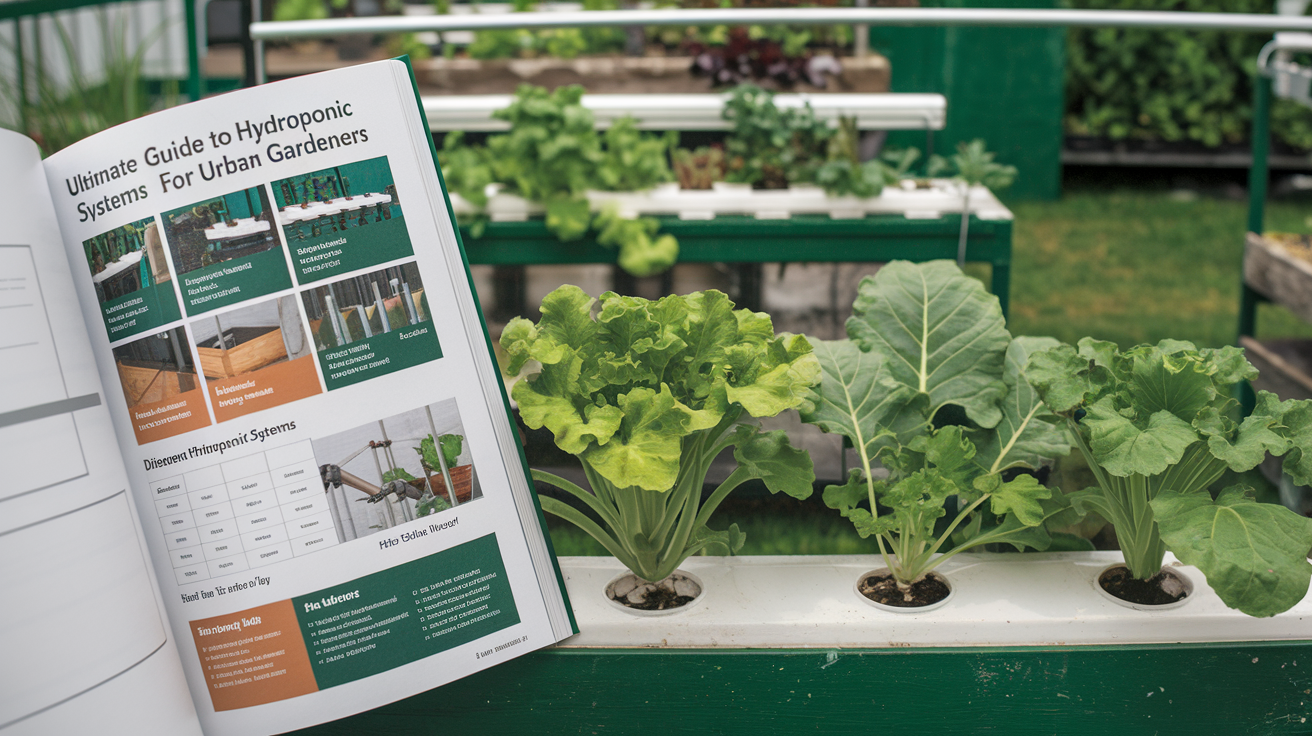Have you ever dreamed of having a lush, productive garden but lack the space or ideal conditions? Enter the world of hydroponic gardening – a revolutionary method that’s transforming how we grow plants, especially in urban environments. This comprehensive guide will walk you through everything you need to know about hydroponics, from the basics to advanced techniques, helping you create your own thriving garden oasis, no matter where you live.
What is Hydroponic Gardening?
Hydroponic gardening is a soil-less cultivation method where plants grow in nutrient-rich water solutions. This innovative approach allows plants to access nutrients directly, resulting in faster growth, higher yields, and more efficient use of resources.
The Science Behind Hydroponics
At its core, hydroponics works by providing plants with exactly what they need to thrive:
- Water: The foundation of hydroponic systems
- Nutrients: Essential minerals dissolved in water
- Oxygen: Crucial for root health and nutrient absorption
- Light: Natural or artificial, depending on the setup
By controlling these elements, hydroponic gardeners can create optimal growing conditions for a wide variety of plants.
Benefits of Hydroponic Gardening
- Space Efficiency Hydroponic systems can be designed vertically, making them perfect for small spaces. You can grow a significant amount of produce in a fraction of the space required for traditional gardening.
- Water Conservation Hydroponic systems use up to 90% less water than conventional gardening methods. Water is recycled and reused, making it an eco-friendly choice.
- Faster growth and Higher Yields Plants in hydroponic systems can grow up to 50% faster and produce up to 30% more yield compared to soil-grown plants, according to a study by the University of Arizona.
- Year-Round Growing With controlled environments, you can grow your favorite fruits, vegetables, and herbs regardless of the season.
- Reduced Pest and Disease Issues Without soil, many common garden pests and diseases are eliminated, reducing the need for pesticides.
Types of Hydroponic Systems
- Deep Water Culture (DWC) Ideal for beginners, DWC systems suspend plant roots directly in nutrient-rich water. An air pump oxygenates the solution, promoting healthy root growth.
- Nutrient Film Technique (NFT) This system uses a continuous flow of nutrient solution over plant roots in a shallow channel. It’s great for leafy greens and herbs.
- Ebb and Flow (Flood and Drain) Plants are periodically flooded with nutrient solution and then drained. This system is versatile and suitable for a variety of plants.
- Drip Systems Nutrient solution is slowly dripped onto the growing medium, providing a constant supply of water and nutrients. It’s efficient and widely used in commercial operations.
- Aeroponics Roots are suspended in air and misted with nutrient solution. While more complex, this system can produce impressive yields.
For a detailed comparison of these systems, check out this guide from Gardening Know How.
Essential Components of a Hydroponic System
- Grow Lights For indoor setups, LED grow lights are energy-efficient and provide the full spectrum of light plants need. The Greenhouse People offer a comprehensive guide on choosing the right grow lights.
- Growing Medium While not soil, hydroponic systems often use inert media like rockwool, perlite, or coconut coir to support plants.
- Nutrient Solution A balanced blend of essential macro and micronutrients keeps your plants healthy. Always use high-quality hydroponic nutrients.
- pH Testing Kit Maintaining the right pH (usually between 5.5-6.5) is crucial for nutrient absorption.
- Air Pump and Stone These provide oxygen to the nutrient solution, preventing root rot and promoting healthy growth.
Getting Started with Hydroponics
- Choose Your System Start with a simple system like DWC for beginners. As you gain experience, you can explore more complex setups.
- Select Your Plants Leafy greens, herbs, and small fruiting plants like tomatoes and peppers are great for beginners.
- Set Up Your Growing Area Ensure you have adequate space, lighting, and ventilation. Consider factors like temperature and humidity control.
- Prepare Your Nutrient Solution Follow the manufacturer’s instructions carefully. Over or under-feeding can harm your plants.
- Plant and Monitor Start with seedlings or clones for faster results. Regularly check pH levels, nutrient concentration, and plant health.
Advanced Hydroponic Techniques
- Vertical Hydroponic Systems Maximize space by growing upwards. These systems are perfect for urban environments and can create stunning living walls.
- Aquaponics Combine hydroponics with fish farming. The fish waste provides nutrients for the plants, while the plants filter the water for the fish.
- Automated Systems Incorporate smart technology to monitor and adjust your system automatically. This can save time and improve consistency.
Troubleshooting Common Hydroponic Issues
- Nutrient Deficiencies Symptoms: Yellowing leaves, stunted growth Solution: Adjust nutrient solution concentration and ensure proper pH levels
- Algae Growth Symptoms: Green slime in reservoirs or on growing media Solution: Reduce light exposure to water and keep system clean
- Root Rot Symptoms: Brown, slimy roots with a foul odor Solution: Increase oxygenation and clean the system thoroughly
For more troubleshooting tips, visit the Pennsylvania State University Extension’s hydroponic resource page.
Conclusion
Hydroponic gardening offers an exciting and efficient way to grow your own food, regardless of space limitations or outdoor conditions. By understanding the basics and implementing best practices, you can create a thriving hydroponic garden that produces fresh, nutritious produce year-round. Whether you’re a city dweller with limited space or an enthusiast looking to maximize yields, hydroponics provides endless possibilities for green-thumbed innovation.
Ready to start your hydroponic journey? Remember, success comes with practice and patience. Start small, experiment, and soon you’ll be enjoying the fruits (and vegetables) of your labor!




